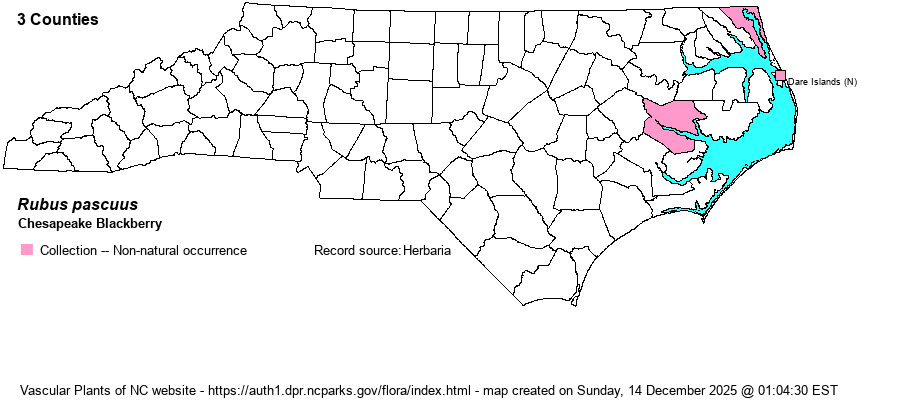| Author | L.H. Bailey | |
| Distribution | Weakley (2020) now considers this species as a native of Europe. The SERNEC database contains a handful of collection records, but oddly -- and disturbingly -- all were made by a single person (H.A. Davis) in May and June 1969, with all specimens at CM (Carnegie Museum); these are not viewable on the SERNEC portal for corroboration. With all collections over the past 50+ years having been made by one person, at 3 sites over a period of just a month -- and no one else has ever collected it in the state(?), may indicate that only the collector was familiar with it at that time, and even today. Weakley (2018) maps it in the Piedmont and Coastal Plain. FNA considers it native to the U.S., whereas Weakley considers it native to Europe.
Native to Europe. In the U.S. from NJ to IL and OK, south to GA and TX. | |
| Abundance | Very poorly known, as all collections were by a single person, indicating that it must be easily overlooked. | |
| Habitat | "Woodland edges, swamp margins, dry thickets, open and other disturbed areas, roadsides" (FNA). Habitats on the NC specimen labels are "on railroad right of way", "by a cemetery", and "along dry sandy ditch". | |
| Phenology | Flowering June-July. | |
| Identification | Chesapeake Blackberry has ashy gray undersides of the leaflets, as does R. bifrons. The flowers are white to pale pink (vs. pink to rosy in bifrons). The prickles are hooked (vs. relatively straight in bifrons). | |
| Taxonomic Comments | FNA suggests that it might be a "stabilized hybrid between a European and a native blackberry species".
| |
| Other Common Name(s) | None | |
| State Rank | SE | |
| Global Rank | G2G4 | |
| State Status | | |
| US Status | | |
| USACE-agcp | | |
| USACE-emp | | |

